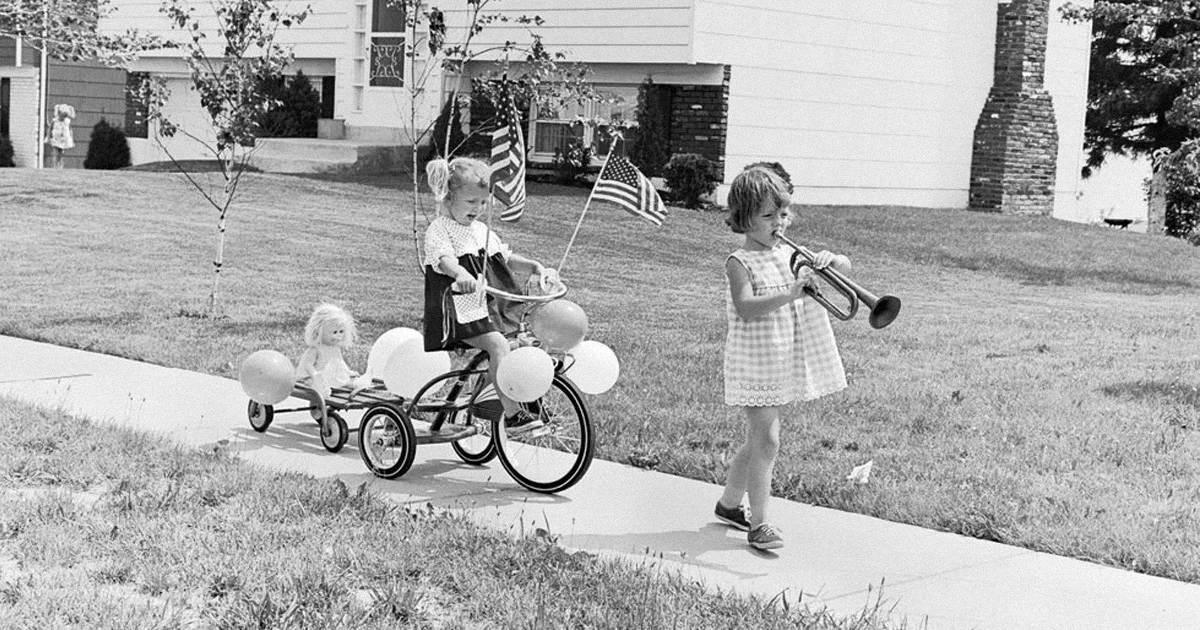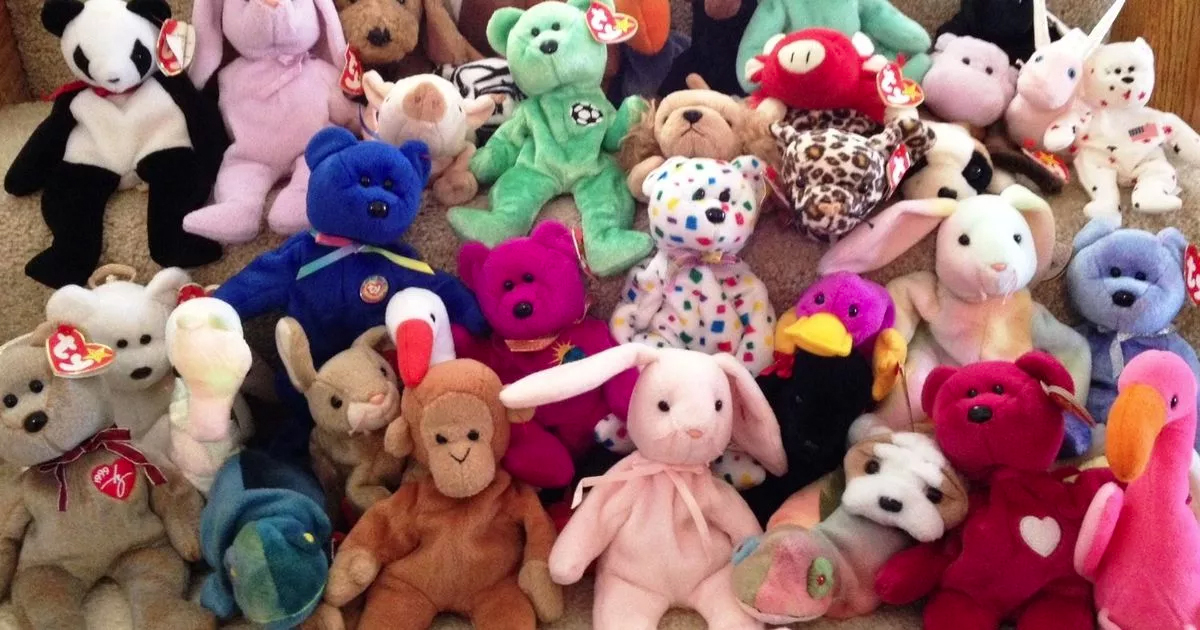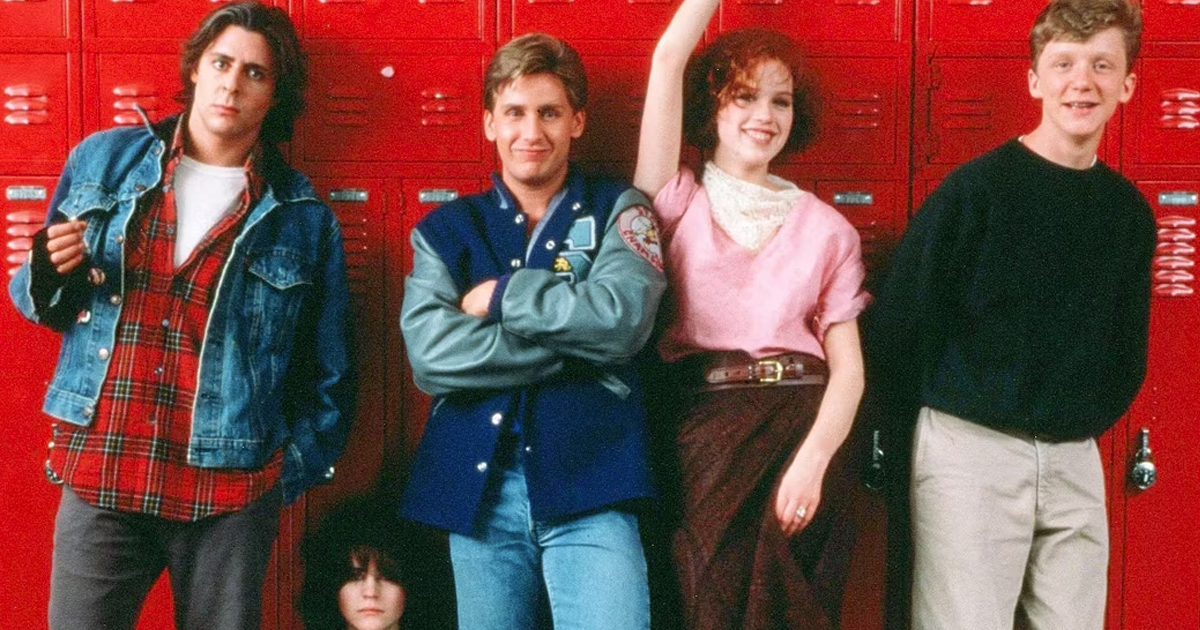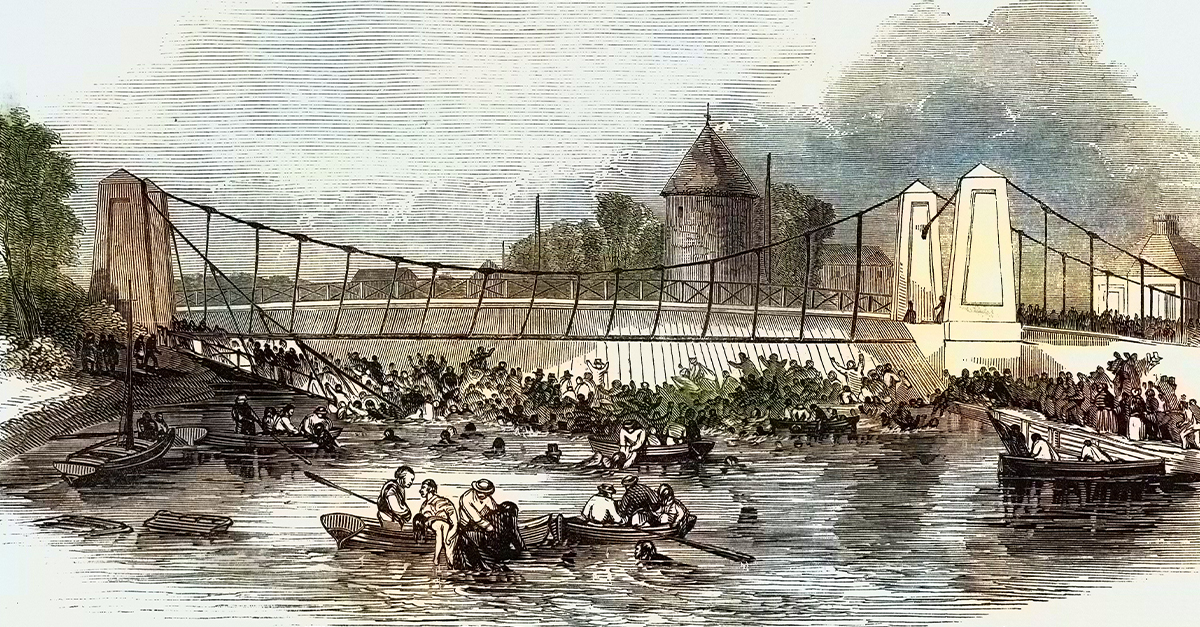Ancient Acquisitions
You don't need to be a time traveler to touch some of history's intriguing elements. Here are 20 extraordinary artifacts, each with its own tale, waiting to transport you through centuries of human drama.
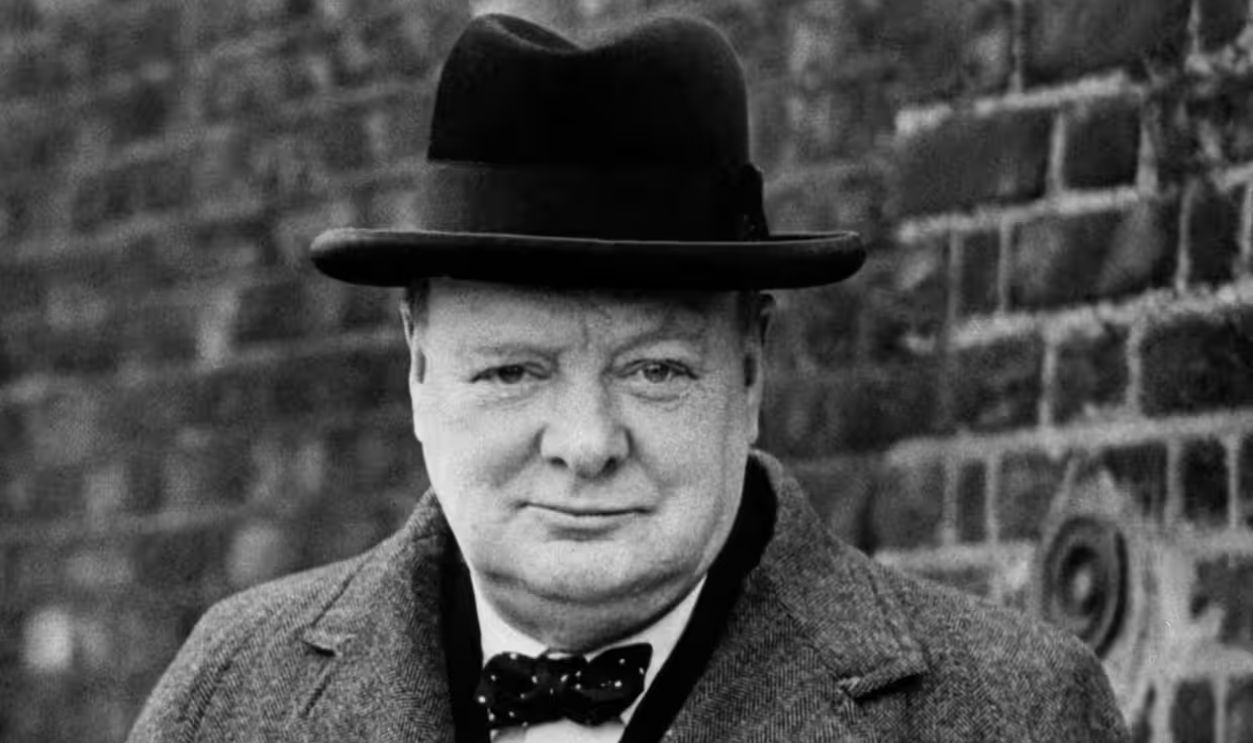
Queen Victoria's Wedding Dress
Queen Victoria wore this dress during her marriage to Prince Albert in 1840 on February 10. This white satin gown with Honiton lace is part of the Royal Collection Trust and is exhibited at Windsor Castle and the Victoria and Albert Museum in London.
 Engraved by S Reynolds, Wikimedia Commons
Engraved by S Reynolds, Wikimedia Commons
Queen Victoria's Wedding Dress (Cont.)
The gown has a structured bodice with an open neckline, off-the-shoulder puffed sleeves, and a full skirt that is about 139 inches in circumference. The gown's train was also over six yards long and was carried by attendants during the ceremony.
 George Hayter, Wikimedia Commons
George Hayter, Wikimedia Commons
George Washington's Hair
George Washington's hair is actually preserved as a piece of history, with more than 50 samples kept at Mount Vernon. These include locks of hair displayed in frames, jewelry, and other keepsakes, many of which were made right after his demise or even while he was still alive.
 Unknown Author, Wikimedia Commons
Unknown Author, Wikimedia Commons
George Washington's Hair (Cont.)
Back in the 18th and 19th centuries, it was common for well-off families to save hair as a way to remember their loved ones. Notable examples of Washington's hair include a locket containing a lock that Martha Washington reportedly cut and gifted to a friend.
 Expert’s Voice | A lock of George Washington’s hair at auction by Venduehuis The Hague
Expert’s Voice | A lock of George Washington’s hair at auction by Venduehuis The Hague
George Washington's Hair (Cont.)
Many of his locks of hair are saved in museum collections across the United States. For example, the Museum of the American Revolution has eight locks attributed to him, while the Massachusetts Historical Society holds a locket containing a lock of his hair.
 George Washington's hair up for auction by ABS-CBN News
George Washington's hair up for auction by ABS-CBN News
Freud's Psychoanalytic Couch
Used from around 1890 to the 1930s, this couch symbolizes the foundational practices of psychoanalysis that Freud developed. History tells us that the sofa was a gift from Madame Benvenisti. It is now at the Freud Museum in London.
 ROBERT HUFFSTUTTER, CC BY 2.0, Wikimedia Commons
ROBERT HUFFSTUTTER, CC BY 2.0, Wikimedia Commons
Freud's Psychoanalytic Couch (Cont.)
Freud then added a richly detailed Qashqa’i carpet on top of it to enhance its aesthetic appeal and create a more inviting atmosphere. After fleeing Vienna due to conflicts in 1938, Freud brought the couch to London, which remained central to his practice until 1939.
 JRennocks, CC BY 4.0, Wikimedia Commons
JRennocks, CC BY 4.0, Wikimedia Commons
Buddha’s Tooth
The Tooth Relic of the Buddha is one of the most revered relics in Buddhism, believed to be a left canine tooth of Siddhartha Gautama. This relic is present today in the Temple of the Sacred Tooth Relic (Sri Dalada Maligawa), which is located in Kandy, Sri Lanka.
 Unknown Author, Wikimedia Commons
Unknown Author, Wikimedia Commons
Buddha’s Tooth (Cont.)
It was brought to Sri Lanka around the 4th century CE by Prince Danta and Princess Hemamali. Apparently, they took it from India disguised as Brahmins to protect it from potential threats. They arrived during the reign of King Kirti Sri Megavanna.
 กสิณธร ราชโอรส, CC BY-SA 3.0, Wikimedia Commons
กสิณธร ราชโอรส, CC BY-SA 3.0, Wikimedia Commons
Abraham Lincoln's Top Hat
Some believe that Lincoln wore this particular hat on April 14, 1865, when he attended a performance at Ford's Theatre in Washington, D.C. After John Wilkes Booth shot him, the hat was found on the floor near his chair. The National Museum of American History stores it.
 Eric Chan from Hollywood, United States, CC BY 2.0, Wikimedia Commons
Eric Chan from Hollywood, United States, CC BY 2.0, Wikimedia Commons
Abraham Lincoln's Top Hat (Cont.)
The hat was made from beaver fur and featured a tall, cylindrical shape typical of stovepipe hats of that era. Following the demise of his son Willie in 1862, Lincoln added a black silk mourning band to the hat as a sign of his grief.
 Jtesla16, CC BY-SA 3.0, Wikimedia Commons
Jtesla16, CC BY-SA 3.0, Wikimedia Commons
John F. Kennedy's Presidential Limo
This car is particularly notable as it was the vehicle in which President Kennedy was executed on November 22, 1963. His presidential limousine, a 1961 Lincoln Continental, is kept safe for viewers at the Henry Ford Museum in Dearborn, Michigan.
 Walt Cisco, Dallas Morning News, Wikimedia Commons
Walt Cisco, Dallas Morning News, Wikimedia Commons
John F. Kennedy's Presidential Limo (Cont.)
Originally a standard Lincoln Continental, the car was modified by Hess & Eisenhardt to serve as a presidential parade vehicle. It was stretched by 3.5 feet, reinforced for safety, and fitted with a heavy-duty heater, air conditioning, and multiple communication devices.
 Greg Gjerdingen from Willmar, USA, CC BY 2.0, Wikimedia Commons
Greg Gjerdingen from Willmar, USA, CC BY 2.0, Wikimedia Commons
Robinson's Dodgers Jersey
Jackie Robinson's 1947 Dodgers jersey stands as a memory of his groundbreaking entry into Major League Baseball (MLB) as the first African American player in the modern era. It is often displayed in museums, including the National Baseball Hall of Fame.
 United States Information Agency, Wikimedia Commons
United States Information Agency, Wikimedia Commons
Robinson's Dodgers Jersey (Cont.)
He played at Ebbets Field in front of a crowd that saw many African American fans. The jersey features the classic Dodgers' blue and white colors, with "Brooklyn" emblazoned across the front and Robinson's number 42 on the back.
Ted Bundy's Volkswagen Beetle
Bundy acquired the tan-colored 1968 Beetle in 1974 and used it extensively until he sold it in 1975, shortly after he became a murder suspect. The car was integral to his modus operandi, allowing him to lure victims under the guise of needing assistance.
 DCTWINKIE5500, CC BY-SA 2.0, Wikimedia Commons
DCTWINKIE5500, CC BY-SA 2.0, Wikimedia Commons
Ted Bundy's Volkswagen Beetle (Cont.)
The Volkswagen has become a macabre collectible within true crime circles as it represents Bundy's terrible acts and the broader narrative of criminal psychology. He has even made modifications to the car. It is located at the Alcatraz East Crime Museum, Tennessee.
 DCTWINKIE5500, CC BY-SA 2.0, Wikimedia Commons
DCTWINKIE5500, CC BY-SA 2.0, Wikimedia Commons
Mary Todd Lincoln's 1861 Dress
This dress is currently preserved at the Smithsonian National Museum of American History. It was designed by Elizabeth Keckley. The dress is made from purple velvet, highlighting the luxurious fabric popular among the elite during the 1860s.
 Smithsonian National American History Museum, CC0, Wikimedia Commons
Smithsonian National American History Museum, CC0, Wikimedia Commons
Mary Todd Lincoln's 1861 Dress (Cont.)
It has both a day bodice and an evening bodice paired with a wide crinoline skirt. The dress was worn during the Washington winter social season of 1861-62, at a time when Lincoln aimed to balance her role as First Lady with the sensitivities surrounding the Civil strife.
 Mary Todd Lincoln's dress by Walk with History
Mary Todd Lincoln's dress by Walk with History
Elvis Presley's King Of Spades Jumpsuit
This has to be one of Presley's most iconic outfits. If you’re a fan, you should know of the King of Spades jumpsuit that he wore during his performances in the early 1970s. The legend first wore the vibrant jumpsuit during his concerts in Las Vegas in August 1973.
 Elvis and his charisma (Part 9): The King of Jumpsuits by Gianni Guerriero
Elvis and his charisma (Part 9): The King of Jumpsuits by Gianni Guerriero
Elvis Presley's King Of Spades Jumpsuit (Cont.)
The jumpsuit is primarily white, adorned with intricate embroidery in colors like blue and red. The spade design is mainly present on the front and back. The outfit was paired with a matching cape. The ensemble had rhinestones and sequins, which made it sparkle under stage lights.
 Elvis and his charisma (Part 9): The King of Jumpsuits by Gianni Guerriero
Elvis and his charisma (Part 9): The King of Jumpsuits by Gianni Guerriero
Mahatma Gandhi's Bedroom
The Indian freedom fighter Mahatma Gandhi's bedroom in Birla House (now known as Gandhi Smriti) is a historical site where he spent around 4 months of his life. This was before his execution on January 30, 1948. It is a museum situated in New Delhi, India.
 Zenit, CC BY-SA 3.0, Wikimedia Commons
Zenit, CC BY-SA 3.0, Wikimedia Commons
Mahatma Gandhi's Bedroom (Cont.)
His bedroom reflects his minimalist lifestyle. It had a plain white mattress on the floor, a low wooden writing desk, and essential personal items such as his glasses, a walking stick, and utensils. Alongside the mattress and desk is an old copy of the Bhagavad Gita.
Queen Elizabeth I's Chequers Ring
Crafted around the 1570s, this ring is one of the few surviving pieces of jewelry associated with the iconic monarch. According to legend, Robert Carey, a relative of Elizabeth, removed the ring from her finger after her demise in 1603 at Richmond Palace.
 Ann Longmore-Etheridge, Wikimedia Commons
Ann Longmore-Etheridge, Wikimedia Commons
Queen Elizabeth I's Chequers Ring (Cont.)
He then presented it to James I as a token confirming Elizabeth's passing. The ring is constructed from mother-of-pearl, gold, and rubies. Also, the use of rubies adds a contrast against the white of the mother of pearl.
 Ann Longmore-Etheridge, Flickr
Ann Longmore-Etheridge, Flickr
Queen Elizabeth I's Chequers Ring (Cont.)
Inside the locket are two portraits facing each other. One depicts Elizabeth in her early forties, and the other is believed to be Anne Boleyn or possibly Catherine Parr, Elizabeth's stepmother. The exact identity of the second portrait has been a subject of debate.
 https://commons.wikimedia.org/wiki/File:Elizabeth_I_when_a_Princess.jpg
https://commons.wikimedia.org/wiki/File:Elizabeth_I_when_a_Princess.jpg
Churchill’s Bowler Hat
Winston Churchill's famous bowler hat is a key part of his public image and is at the Imperial War Museum in London for display. The bowler hat, often referred to as a "derby" in the United States, is recognized by its rounded crown and stiff brim.
 United Nations Information Office, New York, Wikimedia Commons
United Nations Information Office, New York, Wikimedia Commons
Churchill’s Bowler Hat (Cont.)
The hat, along with other personal items like a bow tie and well-chewed Havana cigar, is at the Churchill Museum, which is part of the Churchill War Rooms. It is said that Churchill often wore a black or dark-colored bowler hat.
 British Government, Wikimedia Commons
British Government, Wikimedia Commons
Isaac Newton's Telescope
Newton's telescope utilized a concave primary mirror made from a custom alloy known as speculum metal, a mixture that was shaped and polished by Newton himself. He is believed to have been one of the first to use a pitch lap for polishing the optical surface.
 Solipsist (Andrew Dunn), CC BY-SA 2.0, Wikimedia Commons
Solipsist (Andrew Dunn), CC BY-SA 2.0, Wikimedia Commons
Isaac Newton's Telescope (Cont.)
This self-made telescope was constructed by Newton in 1668. It was presented to the Royal Society in December 1671 and demonstrated to King Charles II in January 1672. This led to Newton's election as a fellow of the Royal Society later that year.
 David Brewster, Wikimedia Commons
David Brewster, Wikimedia Commons
The Alfred Jewel
The magnificent jewel is on display at the Ashmolean Museum in Oxford, and it's one of the biggest draws there. Colonel Nathaniel Palmer donated it to the museum way back in 1718. It represents the artistic revival that Alfred promoted from 871 to 899.
 William M. Connolley, CC0, Wikimedia Commons
William M. Connolley, CC0, Wikimedia Commons
The Alfred Jewel (Cont.)
The jewel is composed of a tear-shaped slice of rock crystal encased in gold, with cloisonné enamel work depicting a figure with large eyes. It holds what appears to be foliate stems, while the base is designed in the shape of a dragon-like head.
 Metropolitan Museum of Art, CC0, Wikimedia Commons
Metropolitan Museum of Art, CC0, Wikimedia Commons
The Alfred Jewel (Cont.)
This most likely held a cylindrical pointer (æstel) that was used for reading. The Alfred Jewel measured something around 6.4 cm in length. It was said to have been discovered in 1693 in a field at North Petherton, Somerset, near Athelney Abbey.
 Giles Watson, CC BY-SA 2.0, Wikimedia Commons
Giles Watson, CC BY-SA 2.0, Wikimedia Commons
Bonaparte's Beaver Hat
Napoleon Bonaparte's famous bicorne black beaver hat was made in the early 1800s. The bicorne hat is characterized by its two pointed ends, with one point worn at the front and the other at the back. This design was fashionable and practical in its own way.
 Back to the battlefield for Napoleon's hat by euronews
Back to the battlefield for Napoleon's hat by euronews
Bonaparte's Beaver Hat (Cont.)
For instance, it helped to deflect rainwater away from the wearer's face. Napoleon owned approximately 120 bicorne hats throughout his life. He was mostly seen wearing his bicorne tilted sideways, with the points parallel to his shoulders, known as “en bataille”.
 Joseph Chabord, Wikimedia Commons
Joseph Chabord, Wikimedia Commons
Bonaparte's Beaver Hat (Cont.)
Several examples of this hat are preserved in museums and private collections. Recently, a bicorne hat attributed to Napoleon sold for €1.932 million at auction in Paris. The hat auctioned was part of a collection owned by French industrialist Jean-Louis Noisiez.
 Napoleon Bonaparte's signature hat fetches record $2.1 million at auction in France by Global News
Napoleon Bonaparte's signature hat fetches record $2.1 million at auction in France by Global News
Harriet Tubman's Shawl
The shawl was presented to Tubman as a gesture of admiration during Queen Victoria's Diamond Jubilee celebrations. Although Tubman did not attend the event, it is said that the shawl was sent as part of a recognition of her bravery and contributions to the abolitionist movement.
Harriet Tubman's Shawl (Cont.)
It is currently part of the collection at the National Museum of African American History and Culture (NMAAHC) in Washington, D.C. It is displayed in the exhibit “Slavery and Freedom,” telling Tubman's story and her contributions to American history.
 National Museum of American History Smithsonian Institution, Flickr
National Museum of American History Smithsonian Institution, Flickr
Mary Queen Of Scots's Lock Of Hair
Apparently, the lock of hair is believed to represent Mary’s identity and her turbulent life, like her imprisonment and eventual execution. Recently, a lock of her hair was featured in an exhibition titled "Mary Queen of Scots: The Exhibition," which opened on March 28, 2024.
 National Portrait Gallery, Wikimedia Commons
National Portrait Gallery, Wikimedia Commons
Mary Queen Of Scots's Lock Of Hair (Cont.)
It is known to have been bequeathed to Queen Victoria by Robert, the eighth Lord Belhaven, and Stenton. The hair is noted for its vibrant red color, which has been described variably as auburn, golden, or red-gold due to its reported darkening over time.
 François Clouet, Wikimedia Commons
François Clouet, Wikimedia Commons
Hemingway’s Typewriter
You will find this piece at the American Writers Museum as part of their Tools of the Trade exhibit. The typewriter is a 1926 Underwood Standard Portable, which still bears visible signs of wear, including impressions left on the platen (the cylindrical part where the paper rolls).
 Cullen328, CC BY-SA 3.0, Wikimedia Commons
Cullen328, CC BY-SA 3.0, Wikimedia Commons
Hemingway’s Typewriter (Cont.)
It is believed that Hemingway used this typewriter to write parts of his A Moveable Feast. In December 2023, a collection of typewriters owned by Steve Soboroff, including Hemingway's Underwood, was auctioned for a total amount of $282,825.
 SamHolt6, CC BY-SA 4.0, Wikimedia Commons
SamHolt6, CC BY-SA 4.0, Wikimedia Commons
Catherine The Great’s Jewelry
Numerous jewelry pieces owned by Catherine the Great are placed in the Hermitage Museum in St. Petersburg, Russia. The Imperial Crown, the Imperial Scepter, and other items from the Russian Imperial Crown Jewels are all part of this amazing collection.
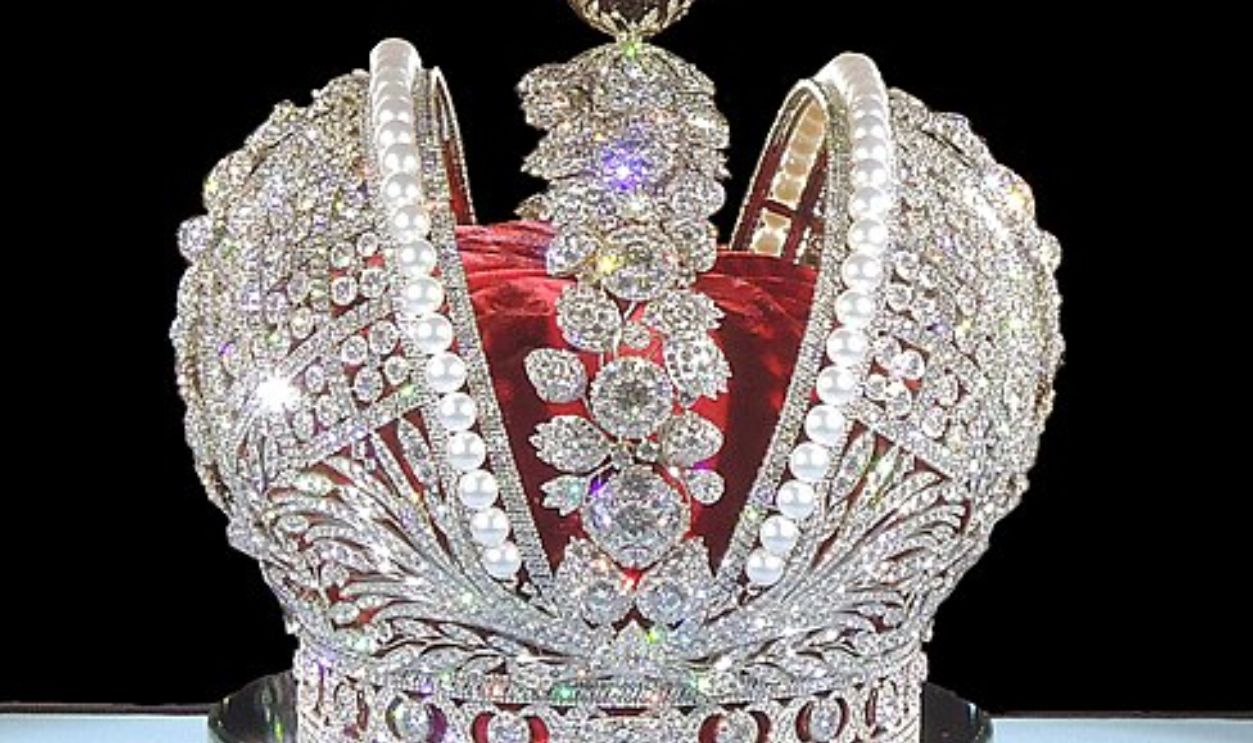 Shakko, CC BY-SA 3.0, Wikimedia Commons
Shakko, CC BY-SA 3.0, Wikimedia Commons
Catherine The Great’s Jewelry (Cont.)
At the heart of her collection were the Imperial Crown Jewels, which included the famous Orlov Diamond. This was a stunning 189.62-carat gem that became a symbol of her power. The Spinel and Diamond Brooch was another item that was celebrated for its opulent design.
 shakko, CC BY-SA 3.0, Wikimedia Commons
shakko, CC BY-SA 3.0, Wikimedia Commons





